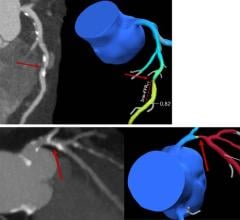
Cristen C. Bolan, Editor
Forty-five percent of the rise in Medicare spending between 1999-2003 was attributed to medical imaging. Although the Stark Law prohibits physician self-referrals, some lawmakers charge physicians with unnecessarily referring patients for imaging exams in order to refer them to outpatient centers where the physician is financially vested, thus incrementing the rise in Medicare costs.
There is no doubt that Medicare coverage for imaging has risen, and perhaps PET (both PET and PET/CT) is the one to blame. It has been in high demand over the last six years due to several factors: it is a noninvasive alternative to surgery, a growing need from an aging population, consumer awareness of the benefits of diagnostic screening, and broadened use for PET applications in oncology for early diagnosis, staging and monitoring recurrence. In 2005, the projected growth for PET was estimated to reach 22.6 percent, according to the 2005 Wash G2 Report. Surprisingly, PET only represented one percent of the 2005 diagnostic imaging market share, said the same report. Studies also point to cost savings due to PET scans where “[t]he average cost of treatment based on a work-up that included a PET scan, as compared to a conventional diagnostic work-up resulted in a savings of 13 percent.”1
Public policy, however, often focuses on cost without considering the clinical and economic value technological innovation delivers. A recent example of this is the Deficit Reduction Act of 2005 (DRA) that Congress just passed. A few highlights of DRA include decreased reimbursements for Medicare in-office imaging services by 50 percent in 2006 and by 75 percent in 2007. Estimates indicate that the measure could cut PET procedures by as much as 50 percent, despite studies that point to the technology’s unprecedented benefits. Then why is Congress short-circuiting technology that effectively improves healthcare?
Many of us can only speculate. Others are taking action. The National Oncologic PET Registry (NOPR) has launched a Web site, www.cancerpetregistry.org, “in response to the Centers for Medicare and Medicaid Services (CMS) proposal to expand coverage for FDG-PET to include cancers and indications not presently eligible for Medicare reimbursement,” reported the Society of Nuclear Medicine (SNM). The 2006 Oncology Demonstration Project will provide Medicare reimbursement for a list of cancers if the patient’s referring physician and the provider submit data to a clinical registry, like NOPR, to assess the impact of PET on cancer patient management.
The diagnostic categories that are currently not eligible for Medicare reimbursement, unless registered through with Demonstration Project, are not uncommon forms of cancer and include: head and neck cancer; esophageal cancer; gastric cancer; colon cancer; rectal; pancreatic cancer; lung cancer; female breast cancer (invasive); ovarian cancer; prostate cancer; non-Hodgkin’s lymphoma; multiple myeloma; and chronic myelogenous leukemia.
Other groups making a statement about the importance of imaging in the fight against cancer and disease prevention are U.S. Oncology and the National Electrical Manufacturers Association (NEMA). The two groups recently hosted a Capitol Hill forum, moderated by Congressman Mike Rogers (R-MI), chair of the House of Representatives Cancer Care Working Group. The event underscored growing national awareness that medical imaging combined with pharmaceutical therapies can diagnose and treat cancer earlier.
“A comprehensive approach to cancer diagnosis and treatment has a tremendous impact on patients across the entire nation,” said Congressman Rogers. “With emerging research continually pointing to imaging as a crucial part of that care continuum, ensuring that all Americans can access quality imaging services is absolutely essential.”
The idea is that imaging enables early detection, which allows patients to avoid costly surgeries and procedures, and to live longer. Isn’t cutting healthcare costs a primary objective of the DRA bill? Maybe the numbers got in the way of taking a “comprehensive approach” to better care.
1. Verboom, P et al. “Cost-Effectiveness of FDG-PET in Staging Non-Small Cell Lung Cancer: The PLUS Study.” The European Journal of Nuclear Medicine and Molecular Imaging. 30.11 (2003).


 August 14, 2025
August 14, 2025 








